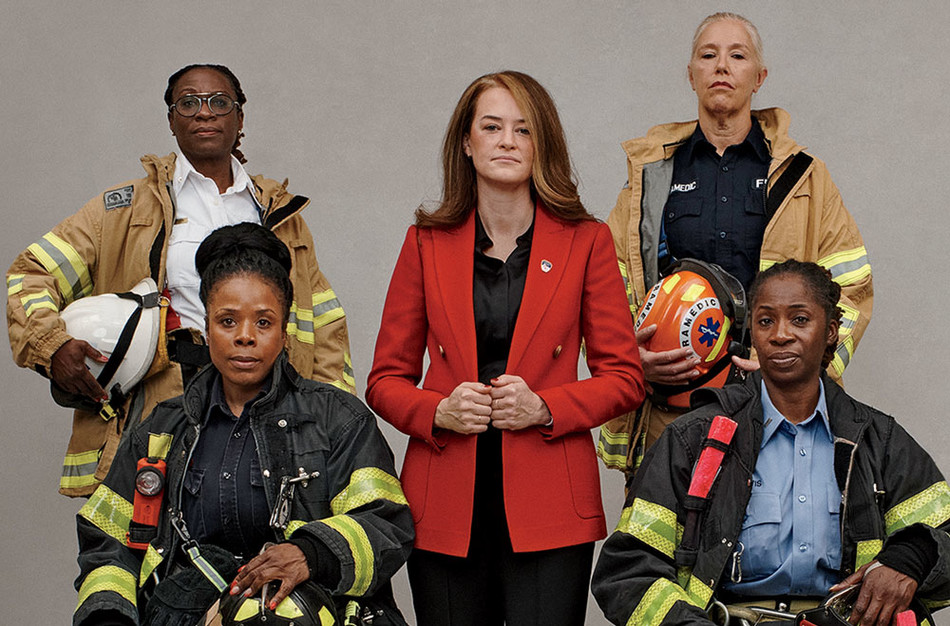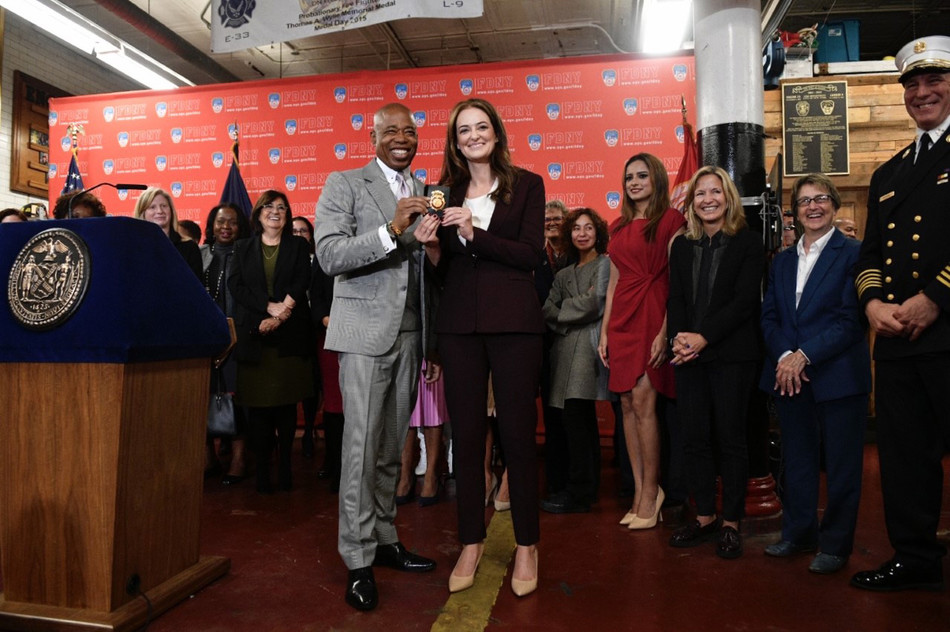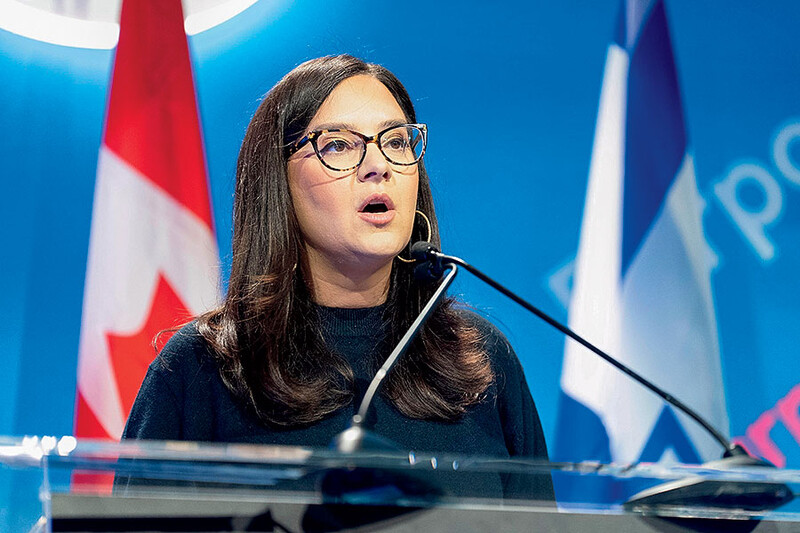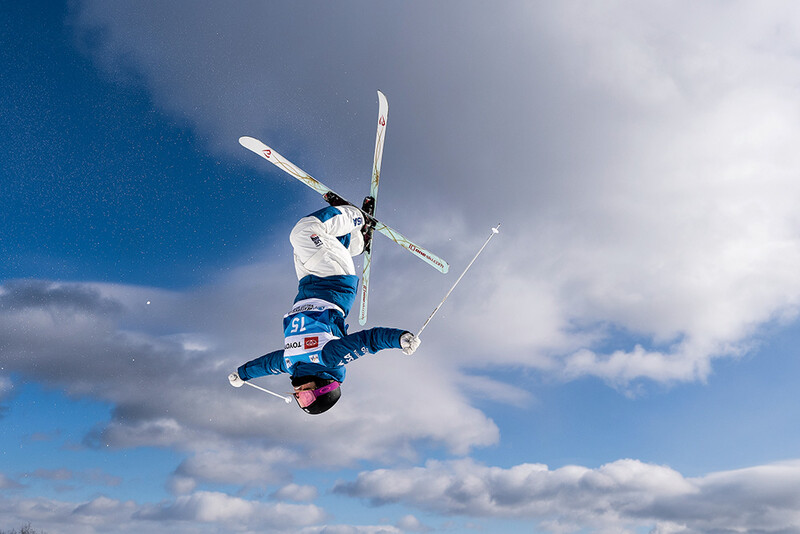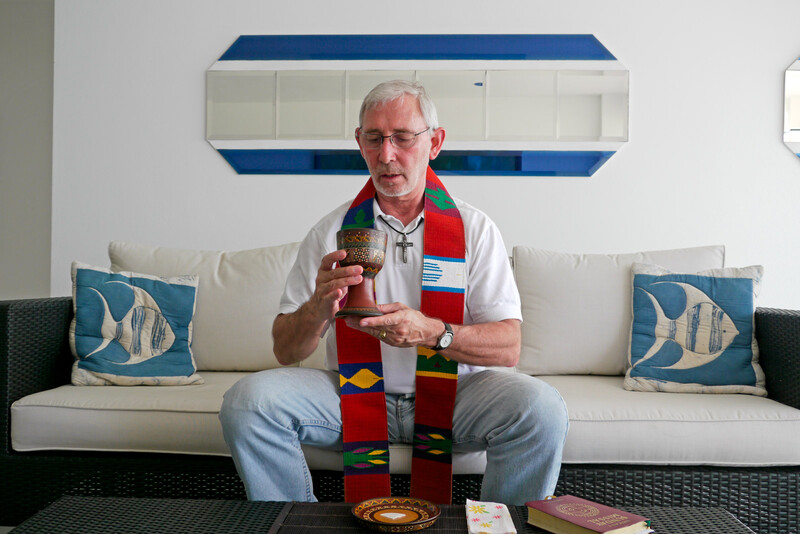On March 8, 2022, Laura Kavanagh ’21SIPA, the acting commissioner of the Fire Department of the City of New York, presided over a ceremony at FDNY headquarters in Downtown Brooklyn. Beside her, thirteen women, recent graduates of the fire academy, stood proudly in their uniforms. It was International Women’s Day, and the symbolism of Kavanagh, the first woman to lead the 157-year-old department, welcoming a group of new female firefighters (pushing their number in the department to 134 — the most ever), was hard to miss. “You have become role models and heroes for a generation of women and anyone who thought they could not have a place at the table,” Kavanagh told the inductees.
She could have been speaking about herself. Last February, after fire commissioner Daniel Nigro retired, Mayor Eric Adams named Kavanagh as Nigro’s interim successor, calling her “a born leader who will guide this department with distinction.” And in October he affirmed Kavanagh’s leadership by swearing her in as commissioner of the department’s eleven thousand firefighters and four thousand EMS workers. Plaudits poured in from elected officials and union leaders. New York City Council member Gale Brewer ’97GS praised Kavanagh as “a problem-solver at a time when this skill is in great demand.”
Kavanagh entered city government as an aide to Mayor Bill de Blasio ’87SIPA and joined the FDNY in 2014 as assistant commissioner of external affairs. In 2018, Nigro named Kavanagh first deputy commissioner — second in command — expanding her purview to day-to-day agency management. Now, as the department’s top civilian administrator, Kavanagh has broken the mold (Nigro, the son of an FDNY captain, started out as a firefighter). “I’m not a first responder,” she says. “But all big entities need people who are good at running things, and that’s what I’ve done my whole career.”
Kavanagh likens her job to that of any company head, and her mandate, as she sees it, is to modernize the department. That means procuring next-generation safety equipment and getting language-translation apps in the hands of EMS crews; improving training for firefighters and medics in a time of terrorism, mass shootings, and super-high-rise construction, in which accidents are common and rescues complicated; working with houses of worship and schools to teach fire safety; and increasing diversity through ambitious recruitment efforts.
Kavanagh grew up in California. Her mother was a teacher, and her father worked for the phone company. She studied political science at Whittier College, then moved to New York and became a community organizer, a job in which “you go into a new place, gain an understanding of the culture, and figure out what you’re advocating for and how to accomplish it,” Kavanagh says. “People wonder how I was able to quickly acclimate to the department, and I tell them I’ve had decades of training.”
After Kavanagh was promoted to second-in-command in 2018, she enrolled in the master’s of public administration program at the School of International and Public Affairs. “I wanted as many tools as possible to build an infrastructure that supports people who are coming to the department from diverse backgrounds,” she says. “Columbia was a way of having a partner in that effort, and one that the fire department deserves.”
At SIPA, Kavanagh found herself among other leaders with ambitious organizational plans who sought insights in class on how to meet their goals — an experience that she found invaluable. “My favorite thing in the entire world,” she says, “is getting things done.”
As commissioner, Kavanagh, when not holding meetings, seems to be everywhere: speaking at an EMT graduation ceremony, swearing in fire chiefs, and — painfully, inevitably — attending funerals for the fallen. She also makes time to visit firehouses and EMS stations. “As a leader, you have to constantly be reminded of what you’re here for,” she says.
Kavanagh is forever humbled by the frontline workers. “Their care and concern for others ahead of themselves is truly exceptional,” she says. “After 9/11 and after COVID you saw the department rebound and respond. A lot of that comes from the family we have here: people know that if something happens to them, their loved ones will be taken care of, and their memory will live on. I think that helps them deal with the day-to-day reality of such a dangerous job.”
And it’s the people who make Kavanagh’s job, with its endless demands and pressures, so extraordinarily rewarding.
As she says, “I’d much rather be in a firehouse or EMS station talking to our members than anywhere else.”
